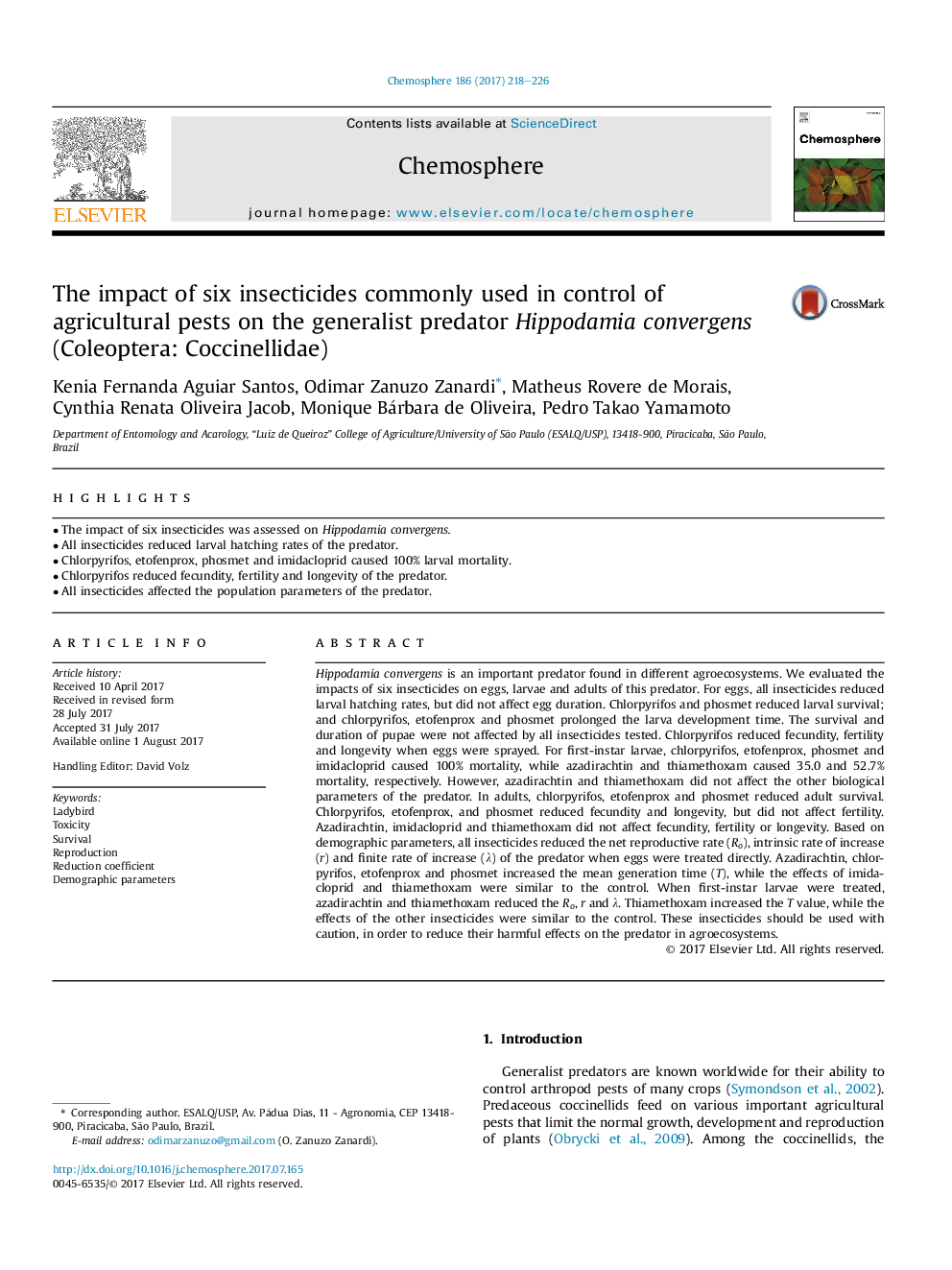| Article ID | Journal | Published Year | Pages | File Type |
|---|---|---|---|---|
| 5746054 | Chemosphere | 2017 | 9 Pages |
â¢The impact of six insecticides was assessed on Hippodamia convergens.â¢All insecticides reduced larval hatching rates of the predator.â¢Chlorpyrifos, etofenprox, phosmet and imidacloprid caused 100% larval mortality.â¢Chlorpyrifos reduced fecundity, fertility and longevity of the predator.â¢All insecticides affected the population parameters of the predator.
Hippodamia convergens is an important predator found in different agroecosystems. We evaluated the impacts of six insecticides on eggs, larvae and adults of this predator. For eggs, all insecticides reduced larval hatching rates, but did not affect egg duration. Chlorpyrifos and phosmet reduced larval survival; and chlorpyrifos, etofenprox and phosmet prolonged the larva development time. The survival and duration of pupae were not affected by all insecticides tested. Chlorpyrifos reduced fecundity, fertility and longevity when eggs were sprayed. For first-instar larvae, chlorpyrifos, etofenprox, phosmet and imidacloprid caused 100% mortality, while azadirachtin and thiamethoxam caused 35.0 and 52.7% mortality, respectively. However, azadirachtin and thiamethoxam did not affect the other biological parameters of the predator. In adults, chlorpyrifos, etofenprox and phosmet reduced adult survival. Chlorpyrifos, etofenprox, and phosmet reduced fecundity and longevity, but did not affect fertility. Azadirachtin, imidacloprid and thiamethoxam did not affect fecundity, fertility or longevity. Based on demographic parameters, all insecticides reduced the net reproductive rate (Ro), intrinsic rate of increase (r) and finite rate of increase (λ) of the predator when eggs were treated directly. Azadirachtin, chlorpyrifos, etofenprox and phosmet increased the mean generation time (T), while the effects of imidacloprid and thiamethoxam were similar to the control. When first-instar larvae were treated, azadirachtin and thiamethoxam reduced the Ro, r and λ. Thiamethoxam increased the T value, while the effects of the other insecticides were similar to the control. These insecticides should be used with caution, in order to reduce their harmful effects on the predator in agroecosystems.
